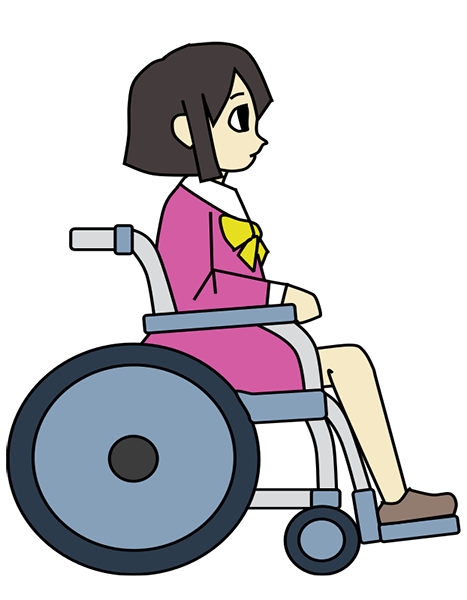
Pregnancy can be a challenging journey for any woman, but for those with disabilities, the obstacles can be significantly greater, due to a lack of accessibility and understanding. Disabled and pregnant women often face unique equality problems that impact their health, well-being, and access to necessary resources. This blog delves into the challenges encountered by disabled pregnant women and explores potential solutions to promote equality and inclusivity.

Equality Problems Faced by Disabled Pregnant Women
- Physical Accessibility
Women with physical disabilities often encounter inaccessible healthcare facilities, including hospitals and clinics. This lack of accessibility can range from inadequate wheelchair ramps and accessible restrooms, making routine visits stressful and uncomfortable, to examination tables that aren’t height adjustable. Additionally, medical equipment and spaces may not accommodate various disabilities, making routine prenatal visits and delivery planning difficult. - Communication Barriers for Deaf Pregnant Women
For pregnant women who are deaf or hard of hearing, communication barriers with healthcare providers can lead to misunderstandings and inadequate care. Many healthcare facilities lack sign language interpreters or fail to provide alternative communication methods, such as written instructions or video relay services. This can prevent these women from fully participating in their care and understanding critical health information. - Societal Attitudes and Discrimination
Disabled women often face societal attitudes that question their ability to become mothers. These biases can come from healthcare professionals, family members, and society at large, leading to a lack of support and increased mental stress. This discrimination can manifest in subtle ways, such as doctors doubting their ability to care for a child or overt actions like discouraging them from having children. - Inadequate Support Systems
The support systems for disabled pregnant women are often lacking. There may be limited access to specialized prenatal care, assistive devices, or resources that cater specifically to their needs. Additionally, they may face challenges in finding accessible parenting classes or peer support groups that understand their unique experiences.
Solutions to Promote Equality
- Improving Physical Accessibility
Healthcare facilities should be equipped with accessible equipment and infrastructure to accommodate women with physical disabilities. This includes installing wheelchair ramps, ensuring that examination rooms and delivery suites are accessible, and providing adaptive equipment. Training healthcare providers to understand and address the specific needs of disabled pregnant women is also crucial. - Enhancing Communication Accessibility
Healthcare providers should offer multiple communication options to cater to the needs of deaf or hard-of-hearing patients. This includes providing sign language interpreters, written materials, and visual aids. Training healthcare staff on basic sign language, deaf culture and the use of communication technologies such as video relay services, can also improve patient experiences. - Challenging Societal Attitudes
Education and awareness campaigns are essential to combat the stereotypes and biases that disabled women face. These campaigns should highlight the capabilities of disabled mothers and promote positive narratives. Healthcare professionals should receive training to provide unbiased, respectful care and support to disabled patients. - Developing Comprehensive Support Systems
Developing specialized services and resources for disabled pregnant women is crucial. This includes offering accessible prenatal classes, providing information on assistive parenting devices, and creating support groups where disabled mothers can share their experiences. These resources should cover various aspects of pregnancy, childbirth, and parenting from a disability-informed perspective. Online platforms and support groups can provide valuable peer support and information sharing.
Conclusion
Pregnancy should be a joyful and empowering time for all women, regardless of their abilities. Achieving equality for disabled pregnant women requires a multi-faceted approach that addresses healthcare accessibility, communication barriers, societal attitudes, and the availability of tailored resources. By addressing the unique challenges faced by disabled pregnant women, we can foster a more inclusive and supportive environment. Ensuring physical and communication accessibility, challenging societal biases, and developing robust support systems are key steps toward achieving equality.
References
- World Health Organization (WHO) – Information on global disability and healthcare accessibility.
- National Association of the Deaf (NAD) – Resources and advocacy for deaf and hard-of-hearing individuals.
- Center for Disability Rights (CDR) – Advocacy for the rights of disabled individuals.
- American College of Obstetricians and Gynecologists (ACOG) – Guidelines and resources for prenatal care.
- National Council on Disability (NCD)
RECENT POSTS
- The Differences in a Twin Pregnancy: What You Need to Know
- What is the significance of bleeding at different stages of pregnancy?
- How to Cope with Claustrophobia: Effective Strategies for Managing Anxiety
- 50 Great Bible Quotes Relating to Pregnancy
- 10 Tips for Getting a Baby to Sleep
- How Much Sleep Does a Baby Need? A Comprehensive Guide for New Parents
- How to Make Money with ChatGPT: A Comprehensive Guide
- Unexplained Infertility: What Can You Do. Advice and Guidance
- The Benefits of Mindfulness: A Practical Guide to a Healthier and Happier Life
- Constipation During Pregnancy: Causes, Prevention, and Relief
- Pregnancy Myths, Superstitions, and Old Wives’ Tales: Fact or Fiction
- Endometriosis: The Impact on Fertility and Pregnancy
- Disabled and Pregnant: Equality Problems and Solutions
- Meconium Clinical Significance and Warning Signs
- Hypnosis in Pregnancy and Delivery: A Comprehensive Guide
- Pregnancy Tests: What is Amniocentesis? Your Complete Guide.
- Study at Home for a New Job or New Career: Your Path to Success
- What is Advanced Maternal Age?
- Essential Guide to Changes in Pregnancy
- Buying for a New Baby: The Essentials
Leave a Reply